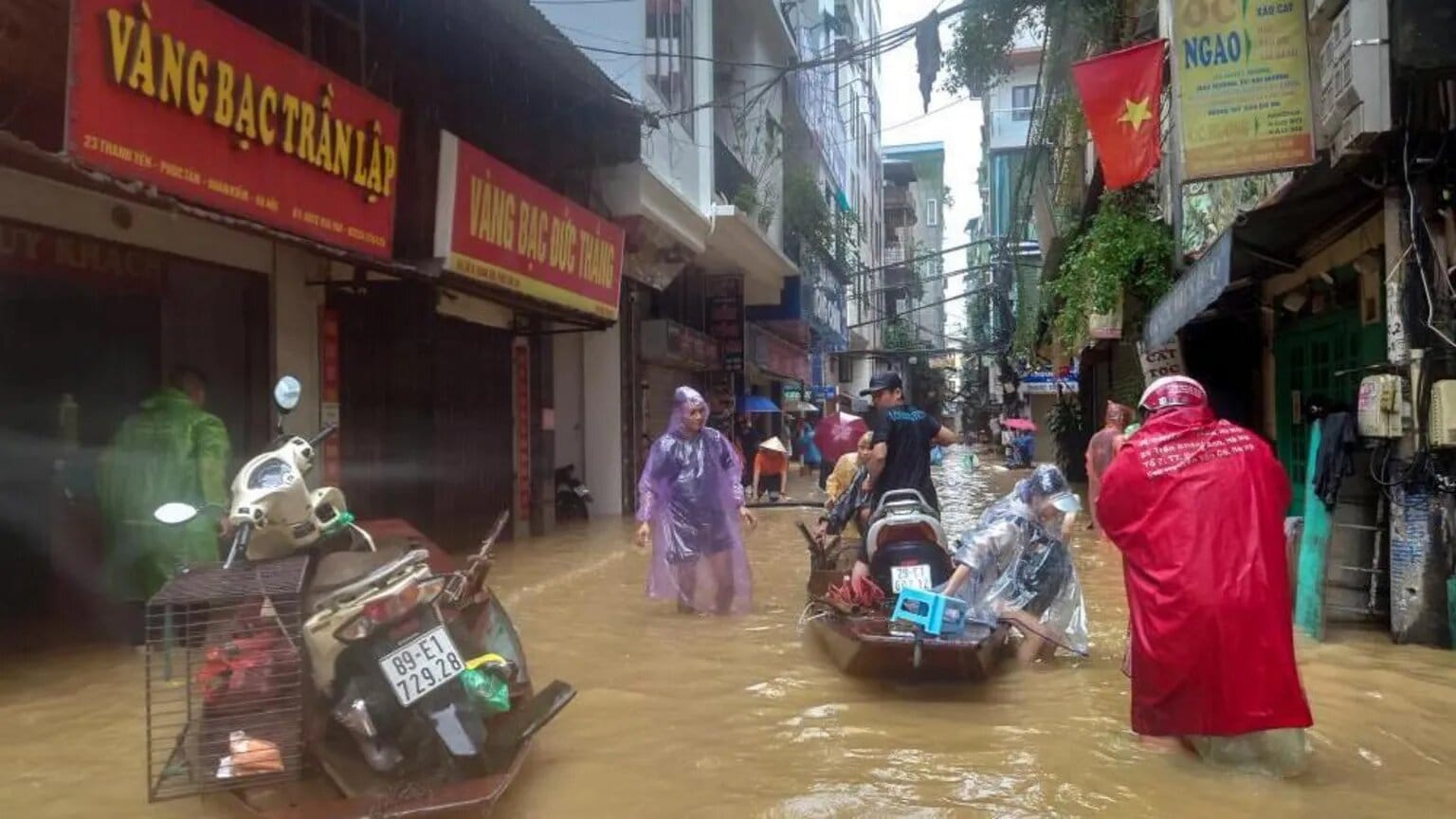Floods in Vietnam force many to escape after typhoon
The flooding is part of the aftermath of Typhoon Yagi, which struck northern Vietnam, causing at least 179 deaths. Floods and landslides across the region have been the primary causes of these fatalities, the government reported.

Thousands of people have been evacuated from low-lying areas in Hanoi, Vietnam, as the Red River rises to its highest levels in 20 years, flooding the city streets.
By Wednesday, water levels from the swollen river reached up to a meter high in some parts, forcing residents to use boats to navigate their neighborhoods.
Power has been cut in certain districts due to safety concerns, and 10 of Hanoi's 30 administrative districts are under a "flood alert," according to state media.
The flooding is part of the aftermath of Typhoon Yagi, which struck northern Vietnam, causing at least 179 deaths. Floods and landslides across the region have been the primary causes of these fatalities, the government reported.
"This is the worst flood I have seen," Hanoi resident Tran Le Quyen told Reuters.
"It was dry yesterday morning. Now the entire street is flooded. We couldn't sleep last night."
Typhoon Yagi, initially classified as a super typhoon—equivalent to a Category 5 hurricane—was later downgraded to a tropical depression.
It has been described as Asia's most powerful typhoon of the year and has continued to cause devastation since making landfall on Saturday.
Nguyen Van Hung, who lives near the Red River, described the situation, saying, "My home is now part of the river."
The typhoon caused an entire village, Lang Nu in northern Lao Cai province, to be swept away on Tuesday. At least 30 people are confirmed dead, and hundreds of soldiers are searching for the missing.
Hoang Thi Bay, one of 63 survivors from the remote mountain community, recounted her experience to AFP, saying she survived by clinging to a concrete pole while her house was destroyed.
Authorities are closely monitoring a hydropower plant in northwestern Yen Bai province due to concerns about the dam collapsing as water levels rise.
Deputy Minister for Agriculture and Rural Development Nguyen Hoang Hiep assured on Wednesday that the hydropower plant is "safe" but advised residents to remain sheltered as it may take up to two days for water levels to return to normal.
Typhoon Yagi has caused significant damage over the past four days, including the collapse of a busy bridge, which plunged ten cars and two scooters into the Red River.
It has also damaged roofs, uprooted trees, and caused widespread destruction to infrastructure and factories in the north.
Before impacting Vietnam, the typhoon resulted in 24 deaths in southern China and the Philippines.
Scientists have warned that global warming could lead to more intense typhoons with higher wind speeds and heavier rainfall, although the influence of climate change on individual storms remains complex.





